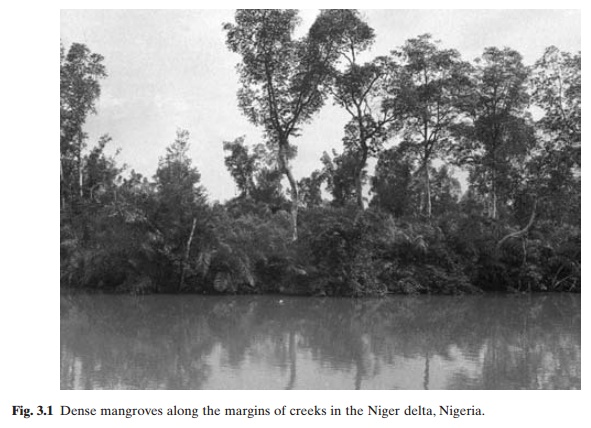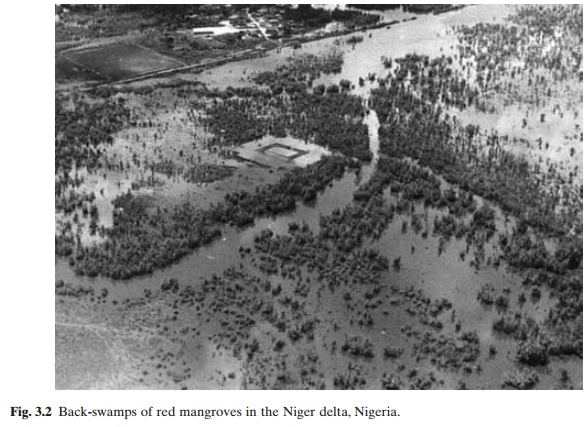Chapter: Aquaculture Principles and Practices: National Planning of Aquaculture Development
National resources - National Planning of Aquaculture Development
National resources
The feasibility of achieving the required production will naturally
depend on a number of factors including natural, technical and human resources,
legal and environmental conditions and funding and financing arrangements.
Land, water and climatic conditions are probably the most important natural
resources to be assessed. Though detailed site surveys cannot generally be done
in the overall planning stage, identification and mapping of potential areas
have to be attempted. Among land areas, priority will naturally be given to
those that are presently not productively used, as for example in agriculture.
However, in some areas where economic agriculture is not possible due to soil or
other conditions, even agricultural land may provide suitable sites for pond
farms. In the assessment of sites for aquaculture, careful consideration has to
be given to possible environmental impacts. There is often a tendency to
describe all lands not directly used by man as potential sites for aquaculture,
and estimate production potential of the country based on total areas of such
lands, as for example coastal swamps.

Many of the coastal swamps are under man-groves, the ecological
importance of which has received special attention in recent years. Dense
mangroves along the margins of estuaries, lagoons and bays prevent soil erosion
and aid silt accretion (fig. 3.1). The marginal zones that are inundated
regularly by tides contribute substantially to the productivity of the waters
and form the nursery grounds of many marine and some inland species of fish and
shellfish. Conversion of such areas into fish ponds is likely to affect the
capture fishery resources and adversely affect the environment. In fact, such
areas should not be considered for pond farms, for other than ecological
reasons. In the first place, it would be too expensive and difficult to clear
the tall mangroves that grow along the margins and the dense growths behind
them. In addition, pond farms built along these marginal zones will be more
exposed to natural disasters like high tidal storms, typhoons and cyclones. On
the other hand, the back mangroves, characterized by less dense and bushy
growths and only occasional tidal inundation, contribute little to aquatic
productivity and are more easily cleared and converted into pond farms (fig.
3.2), so only these areas should be considered when assessing available land
for aqua culture. Similarly, when considering coastal waters, other uses of
such areas should be taken into account such as for navigation or recreation,
besides possible problems of environmental management, including water quality
control and waste disposal.

For land-based aquaculture, the availability of adequate quantities of
water of appropriate quality is an obvious requirement. Natural bodies of
water, man-made irrigation or multi-purpose systems and ground water are major
resources to be assessed, besides rainfall which is not always a reliable
direct source of supply. The quantity of water required will depend on the type
of culture system to be adopted as, for example, stagnant ponds, flow-through
systems, cages or pens, etc. Though technologies for recirculation of water
exist, large-scale use of it other than for hatcheries seems too expensive at
present. As well as the source of water, the means of supplying it to the
aquaculture facilities is also important, because of the costs and availability
of energy for pumping.
Assessment of suitable areas for development will lead to the
determination of the systems of culture or species of animals or plants that
can be cultured. Although many cultured species are gradually being
acclimatized to grow in different temperatures and salinity ranges, there are
still tolerance limits and ranges within which they will grow fast or
reproduce. So, agro-climatic conditions are a determinant in species selection.
As mentioned earlier, consumer preference and acceptance will also have to be
considered.
It is understandable that the economic viability of a development plan
should be judged by the investments’ ability to achieve reasonable returns, if
private sector investments are to be promoted. Unfortunately the environmental
cost, which is especially important, has been neglected and this has brought
considerable disrepute to the sectors, with many people questioning the
sustainability of all types of aquaculture. The Bruntland Commission (the World
Commission on Environment andDevelopment) in its report Our CommonFuture, defines sustainable development asdevelopment
that meets the needs of the present without compromising the ability of future
generations to meet their own needs. Adherence to the principle of sustainable
development also involves balancing between intragenerational equity and needs
for environmental protection as well as development. In view of the present low
state of knowledge and experience, the necessity of a precautionary approach is
accepted. Development may require large amounts of financial and environmental
risks, which cannot always be fully assessed with any certainty. The principle
of ‘polluter pays’ for the cost of environmental damage as well as its
monitoring and rectification is the basis of environmental management.
Therefore some form of environmental assessment will be required as part of the
planning processes. The wide range of agencies involved in decision-making on
an aquaculture project, and the wide variety of stakeholderswith differing
criteria, make decisions on the application of a precautionary approach policy
in planning of aquaculture development extremely complex. The need for
intergenerational equity makes it more difficult to evaluate the development
project. Aquaculture, like all other development activities, may change the
balance of natural resources and their distribution. These changes have to
assessed to ensure that vital components are sustained or increased in the
longer term.
Planning on a short-term or a long-term basis would require evaluation
of the costs and benefits of aquaculture and how it fits into the total
priorities of economical development of a country in the allocation of natural
resources. The aquaculture sector is a relatively new innovation in many
countries, there are many other conflicting uses for natural resources.
Planning aquaculture development as a priority activity on a national basis
would require comparison of the costs and benefits of aquaculture not only
economically but also environmentally. Estimation of environmental capacity to
accommodate additional resource use without any negative influence on the
environment has to be determined in the location where aquaculture is to be
carried out. Environmental capacity measures the resilience of the natural
environment to the impact of additional activities planned to be carried out.
In the case of aquaculture, the rates at which nutrients and organic matter are
discharged from an aquaculture farm can trigger eutrophication, and the
resultant lowering of dissolved oxygen level that can be tolerated without
causing mortality of the indigenous biota.
It would be possible to map out the areas that can be utilized for
aquaculture, without adversely affecting other legitimate uses of natural
resources. The assessment could be expected to yield the basis for delineating
aquaculture zones that can be allocated for the aquatic farming industry while
avoiding unhealthy competition for land and water resources. If the licensing
of aquaculture farms is adopted, it could be extremely helpful to recommend what
systems and species might be suitable for the area underdevelopment. While
water is an important natural resource for aquaculture, it has to be recognized
that in the future water resources may become scarce and water shortages may
occur in many areas. This is an important constraint that must be taken into
account, and appropriate systems and species may have to be considered for
farming under special circumstances. Diverse farming systems are presently
available and may be perfected in the future, such as cage and pen culture in
inshore and off-shore locations, flow-through systems in tanks and raceways,
recycling and recirculating open ponds, or indoor systems including the
commercial production of tropical species in treated water recirculating
systems.
When planning aquaculture one should consider also the potentialities
for enhancing aquatic stocks that may have been affected by unfavourable
conditions in the area under development and the building up of culture-based
fisheries where suitable conditions exist. Stock enhancement may include
building or promoting culture-based fisheries by the release of healthy
seedlings, habitat improvement, fertilization, the introduction of food
organisms and the reduction of predatory or competing organisms. Transplantation
and stocking of several anadromous species of commercial importance have been
successfully undertaken in the US, Canada, the former USSR and, lately, Iran.
Pacific salmon (Oncorhyncus spp.) and
Caspian sturgeons (Acipenser spp. and
Huso spp.) and Salmo spp. are well-known species that have regularly been stocked
to enhance the overfished or diminished populations.
Social implications of development planning become dominant when
sustainability is a major consideration. The need for the involvement and
cooperation of local communities in planning an aquaculture project to ensure
its successful operation are often emphasized. Since a broad range of agencies
have a decision-making role in an aquaculture project, all possible ways of
integration and coordination with local representatives of the agencies
concerned have to be considered. Stakeholders in the relevant sectors have to
be consulted and their views reflected in the plan .
Related Topics